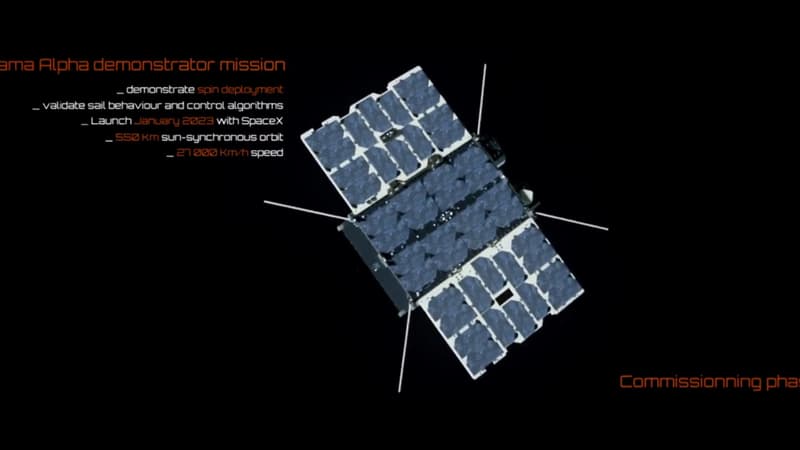Gama’s solar sail is similar to “a gigantic survival blanket of about 75 square meters that we deploy in space to push our payloads,” explains Louis de Goüyon Matignon, co-founder of Gama, on the Tech&Co set.
With this project, Gama wants to revolutionize long-distance space transportation thanks to its solar sail. This, no thicker than 50 times the thinness of a hair, “will reflect light like a mirror.” By bouncing, the light imparts an acceleration to the entire space object. “This acceleration, we use to transport our scientific instruments,” says the co-founder.
With this project, Gama is reinventing space propulsion because, at this very moment, there is a revolution in the field of nanosatellites. The solar sail is aimed, not at low orbit, but at Mars and Venus, or even “the outer solar system,” enthuses Louis de Goüyon Matignon.
Unfurled sail in the spring
Tuesday, January 3, marked the launch of Gama’s first satellite into space with SpaceX. It was deployed at an altitude of 530 kilometers. “We have received the first communications with the satellite, which at the moment is traveling at a speed of 28.00 km/h.” The solar sail will be unfurled in the spring. “This mission also allows us to reassure our investors.”
Gama dominates photonic propulsion, but above all the deployment of super surfaces in space “and today this is a quality that is rarely found in certain societies.” We can imagine many things with a solar sail such as telecommunications, antennas, deorbit.
The company, created in 2020, employs about twenty people in the Paris region. For now, the solar sail will remain in low orbit because it is difficult to leave it due to the residual atmosphere. The next mission will take place in 2025 to fly higher and then eventually target Venus or Mars.
Source: BFM TV


